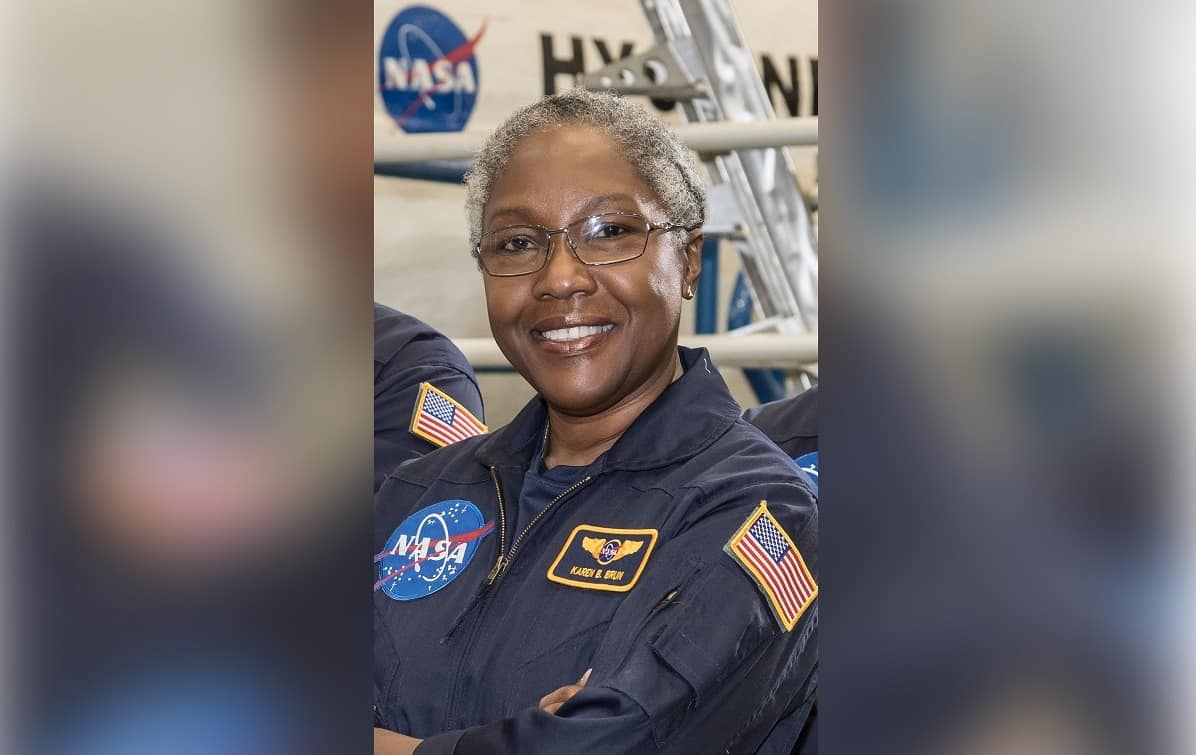Student is Helping NASA Prepare for Trips to Mars

Through a 32-year career in the U.S. Air Force where she specialized in aviation and air mobility operations serving as a C-5 Galaxy Flight Engineer, she never lost sight of her interest in space.
As she prepared for civilian life, she acquired FAA licenses and ratings including Instrument Rated Private Pilot; Remote Pilot; Aircraft Dispatcher; Airframe and Power Plant Mechanic; and Flight Engineer (Turbojet). She stayed committed to aviation safety and human factors by participating in flying simulations as part of an ongoing FAA-sponsored study researching possible causes of weather-related general aviation accidents.
The Embry-Riddle Aeronautical University Worldwide Campus student finished 45 days in a simulated space habitat this past fall as part of NASA’s Human Exploration Research Analog (HERA) at Johnson Space Center in Houston. HERA is a unique three-story structure designed to serve as an analog for isolation, confinement, and remote conditions in extraterrestrial exploration scenarios.
Following HERA, she recently completed an internship this spring with NASA’s Armstrong Flight Research Center at Edwards Air Force Base in California.
Brun’s road to NASA has been paved with people she met along the way at Embry-Riddle and programs that gave her the needed skills from coursework to assistance from Career Services and her graduate Worldwide Campus academic advisor.
In 2015, Brun, who has three associate degrees from the Community College of the Air Force and a Bachelor of Science in Applied Science and Technology from Thomas Edison State University, shared her future goals with Dr. Brent Terwilliger, assistant professor of Aeronautics and program chair for the Embry-Riddle Worldwide Campus’s new online Master of Science in Unmanned and Autonomous Systems Engineering degree program. His advice led her to enroll in the master’s Unmanned Systems program with a specialization in Space Systems.
During her time at Embry-Riddle, she has also participated in the Project PoSSUM Citizen-Scientist Astronaut Program, an intense astronaut-like training program where students receive instruction in how to use a spacesuit, high-altitude and hypoxia awareness and aerospace physiology.
While participating with Project PoSSUM, Brun learned about NASA’s HERA program and was selected as a mission specialist for the HERA XV mission after a rigorous application process, including physical, psychological and technical skills testing.
“That is why Embry-Riddle is so important,” Brun said. “If I wasn’t associated with Embry-Riddle, I would not have been able to do all these things.”
HERA missions, which began in 2014, are one of several ground-based analogs used by NASA’s Human Research Program (HRP) to study ways to help astronauts move from lower-Earth orbit to deep space exploration.
The program works to improve astronauts' ability to collect data, solve problems, respond to emergencies and remain healthy during and after extended space travel. With the goal of traveling to Mars and beyond, the program is using ground research facilities, the International Space Station (ISS) and analog environments to develop these procedures and to further research areas that are unique to Mars.
The HERA XV mission, which ended in December, looked at behavioral health and performance assessments, communication and autonomy studies, human factors evaluations and medical capabilities assessments.
Brun and her three co-mission specialists lived in the small, cylindrical 636-square-feet habitat for 45 days. The total mission also included14 days of pre- and seven days post-confinement.
Inside the habitat, she worked on projects to help with future missions to Mars, including testing various hardware prototypes and applications used on the ISS. Her team used various simulations in growing food and plants, and they ate similar packaged food that astronauts consume on the ISS, from scrambled eggs and pancakes, to steak and ribs.
Experiments with sleep and circadian rhythms (a 24-hour internal clock that cycles between sleep and being awake) tested their alertness. Virtual reality spacewalks (extravehicular activity) simulated traveling to an asteroid and collecting samples.
“This is why HERA is so important. A lot of what we did involved current technology and testing it in simulated conditions,” Brun said. “My commitment is not only to the space program, but to humanity and where we go as a species into deep space.”
Brun’s future plans include applying to the Human Factors doctoral program at Embry-Riddle after finishing her master’s degree.
“Human Factors (the study of how people interact with technology, tools, environments and systems) is what will get us to Mars,” Brun said. “Can we as humans sustain the 7 and a half months, one-way trip to Mars? We have the technology, but can we get there? I want to be part of the NASA space program working toward getting people ready to go into space.”
Roth Britton, Brun’s graduate academic advisor at Embry-Riddle’s Worldwide Campus Department of Online Education, said since his first “welcome” call to Brun, she has been motivated and excited for opportunities ahead.
“She has been looking for ways to grow and pursue the things she is passionate about every step along the way,” Britton said. “I am very proud of her and expect big things as she moves forward on her journey.”
Anyone interested in finding out what it takes to participate in a HERA mission, can go to nasa.gov/analogs/hera/want-to-participate for more information.

 Deborah Circelli
Deborah Circelli